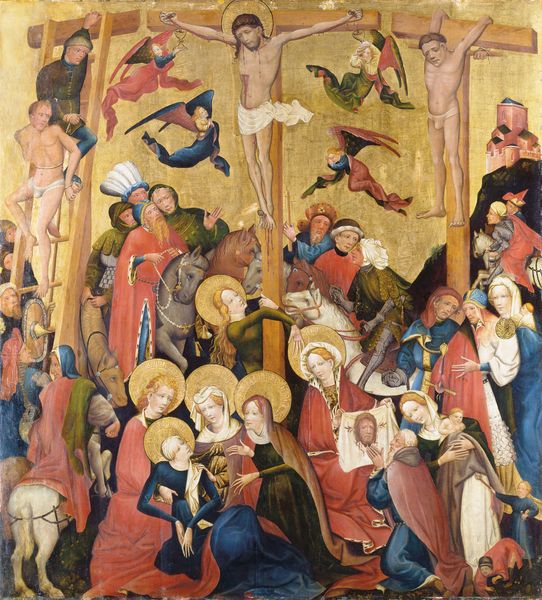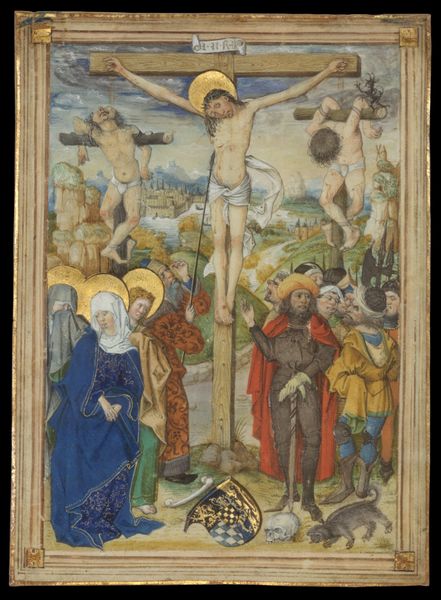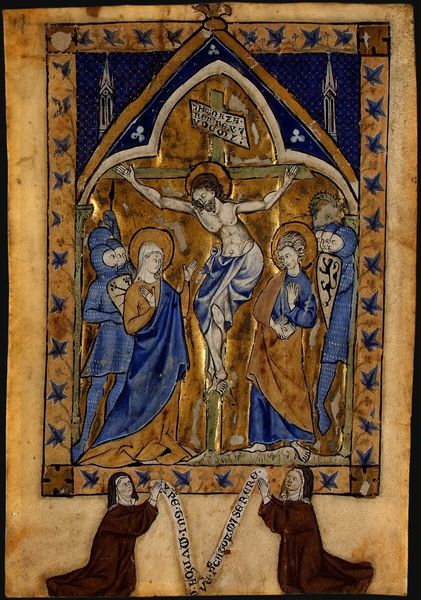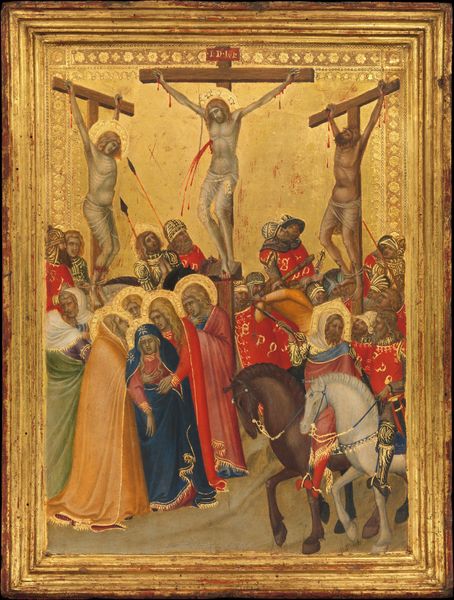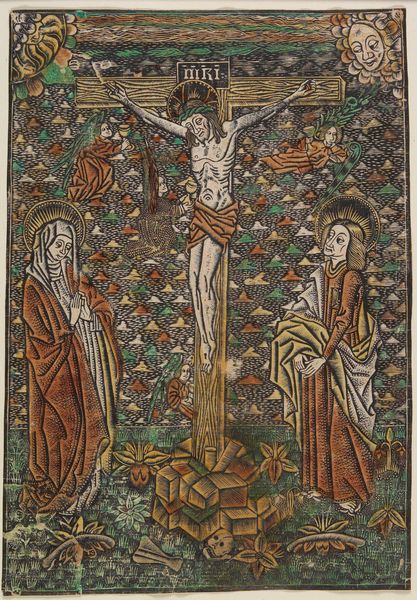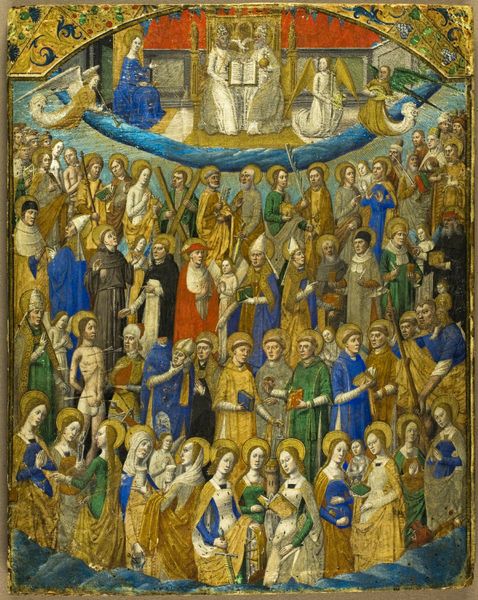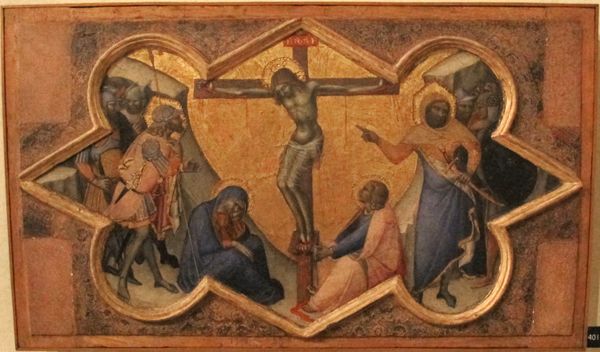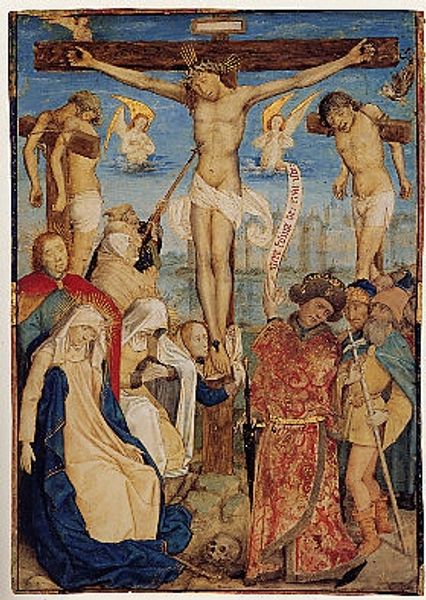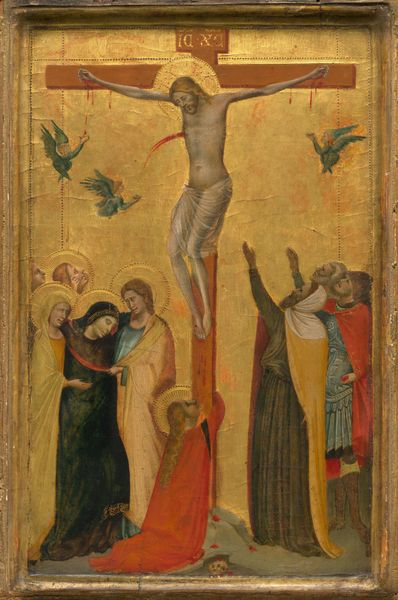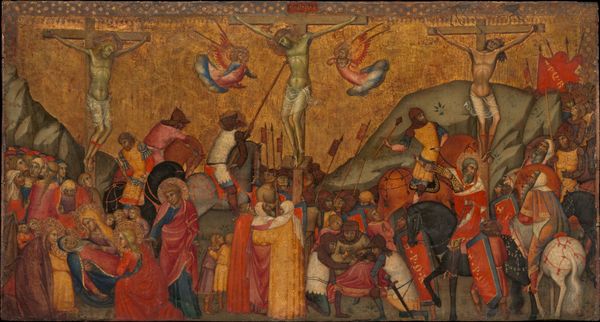
panel, tempera, painting
#
medieval
#
panel
#
allegory
#
narrative-art
#
tempera
#
painting
#
figuration
#
oil painting
#
history-painting
#
international-gothic
#
mixed media
Dimensions: height 176.8 cm, width 186 cm, depth 12.5 cm, depth 6 cm
Copyright: Rijks Museum: Open Domain
Curator: This is Pablo Vergós's “Calvary,” painted in tempera on panel sometime between 1475 and 1499. A rather crowded scene. Editor: Yes, intense is the word that springs to mind. It feels claustrophobic with so many figures packed together and an unnervingly decorative backdrop, juxtaposing violence and ornate beauty. Curator: Note the medium—tempera requires meticulous layering. Pigments were often sourced from specific regions, lending to the work’s inherent value based not only on artistic skill but material acquisition. We have here egg tempera I imagine applied painstakingly. Editor: Indeed. Beyond the egg tempera, there is an interesting dance between foregrounding the spiritual narrative, while at the same time mirroring the era’s social hierarchy in its composition. The divine suffering is intimately entwined with earthly power dynamics, particularly male authority versus the suffering of women who are visually silenced into grief here. Curator: Think about the role of the patron too, though. Who commissioned such a piece and how the work reflects not just the artist’s interpretation, but also the commissioner's intentions and wealth is an essential question that remains unanswered here. The choice of materials alone indicates a certain level of financial investment. Editor: Precisely. It’s also crucial to note that historical narratives depicted are almost exclusively viewed from positions of privilege, isn’t it? What untold narratives of those who made the brushes, ground the pigments or were of low socio-economic status are woven into that story that goes unrecognized in history as much as that is depicted here? Who is truly represented here? Curator: Looking closely, you notice how skillfully he has created the textures despite the limitations of tempera. Consider how time consuming preparing everything was: the panel, the gesso, the grinding of pigments by hand...it offers insight into a very different economy of artistic production. Editor: So much of history privileges dominant narratives. Art helps question that truth and brings conversations of marginalization into visibility when the social issues of oppression or disparity continue echoing from those historical moments and remain strikingly topical even today. Curator: Ultimately this panel stands as a testament to a convergence of skilled craftsmanship and a particular historical lens through which narratives of power and faith were woven together. Editor: It certainly offers a rich starting point to challenge the silences, questioning who gets to author the grand narratives of suffering, redemption, or any sort of history at all.
Comments
No comments
Be the first to comment and join the conversation on the ultimate creative platform.
